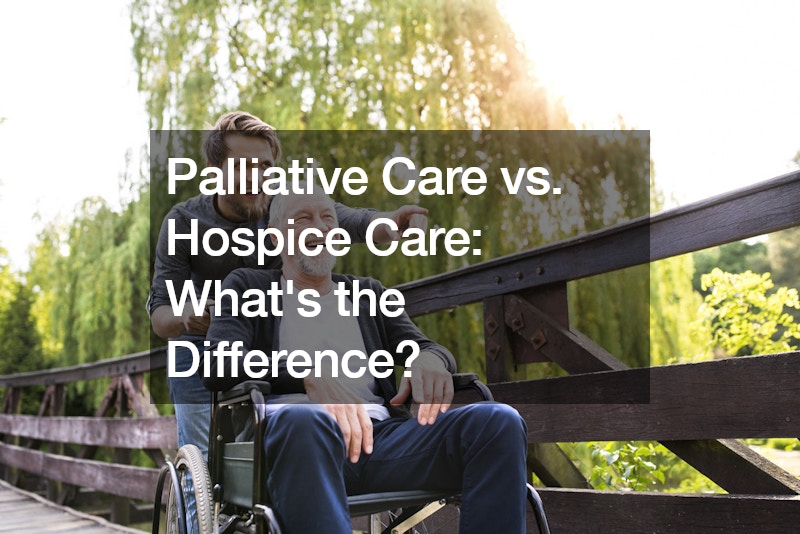
Disclaimer: This website provides health information for educational purposes only and is not a substitute for professional medical advice, diagnosis, or treatment. Always seek the guidance of a qualified healthcare provider with any questions you may have.
Palliative care and hospice care are two terms often used interchangeably, but they serve distinct purposes in the realm of healthcare. While both focus on improving the quality of life for individuals facing serious illnesses, they differ in their scope, timing, and objectives. Understanding the differences between palliative care and hospice care is crucial for patients, families, and caregivers navigating complex medical decisions.
In this article, we delve into the nuances of each approach to provide clarity on how they differ and when each may be appropriate.
Defining Palliative Care
Palliative care is a holistic approach to healthcare that aims to improve the quality of life for patients facing serious illnesses, regardless of their stage of illness or prognosis. It focuses on addressing the physical, emotional, social, and spiritual needs of patients and their families throughout the illness trajectory. Palliative care can be provided alongside curative or life-prolonging treatments and is not limited to end-of-life care. Its goal is to relieve symptoms, alleviate suffering, and enhance comfort and well-being.
One key aspect of palliative care is its emphasis on interdisciplinary collaboration. A team of healthcare professionals, including doctors, nurses, social workers, chaplains, and other specialists, works together to develop individualized care plans tailored to each patient’s unique needs and preferences. This team approach ensures that all aspects of a patient’s well-being are addressed comprehensively.
Understanding Hospice Care
Hospice care, on the other hand, is a specialized form of care designed for individuals nearing the end of life. It is typically reserved for patients with a prognosis of six months or less to live, although this timeframe is not always exact. Hospice care focuses on providing comfort and support to patients and their families during the final stages of a terminal illness. Unlike palliative care, hospice care is primarily aimed at end-of-life care and does not include curative treatments.
Hospice care is provided in various settings, including patients’ homes, hospice centers, hospitals, or long-term care facilities, depending on the individual’s preferences and circumstances. The interdisciplinary hospice care team works closely with patients and their families to manage symptoms, control pain, and ensure dignity and comfort during the end-of-life process. Additionally, hospice services often include emotional and spiritual support for both patients and their loved ones as they navigate this challenging time.
Key Differences between Palliative Care and Hospice Care
While palliative care and hospice care share similar goals of enhancing quality of life and alleviating suffering, several key differences set them apart:
-
Timing: Palliative care can be initiated at any stage of a serious illness, from the time of diagnosis onward, and can be provided alongside curative treatments. In contrast, hospice care is typically initiated when curative treatments are no longer effective or desired, and the focus shifts to end-of-life comfort care.
-
Prognosis: Palliative care is not limited by prognosis and can continue for as long as it benefits the patient, regardless of their life expectancy. In contrast, hospice care is specifically for patients with a prognosis of six months or less to live, as determined by a physician.
-
Scope of Services: Palliative care encompasses a broad range of services aimed at improving quality of life, including symptom management, psychosocial support, spiritual care, and advance care planning. Hospice care focuses primarily on end-of-life care, including pain and symptom management, emotional support, and assistance with practical matters related to death and dying.
-
Setting: Palliative care can be provided in various settings, including hospitals, outpatient clinics, long-term care facilities, and patients’ homes. Hospice care can also be provided in these settings, with an emphasis on home-based care, but may also include dedicated hospice centers or inpatient hospice units.
Advance Care Planning
Advance care planning (ACP) is a fundamental aspect of palliative and hospice care, ensuring that patients receive care aligned with their values, preferences, and goals, especially towards the end of life. ACP involves discussions between patients, their families, and healthcare providers to anticipate future healthcare decisions and articulate preferences for medical treatment and interventions.
At the heart of advance care planning is the completion of advance directives, legal documents that outline an individual’s healthcare preferences in the event that they become unable to make decisions for themselves. These directives typically include a living will, which specifies the types of medical treatments a person does or does not want to receive, and a healthcare proxy or durable power of attorney for healthcare, appointing a trusted individual to make medical decisions on their behalf if they are unable to do so.
Conclusion
In conclusion, while palliative care and hospice care share common goals of improving quality of life and providing holistic support to patients and their families, they differ in their timing, scope, and objectives. Palliative care is a comprehensive approach to care that can be initiated at any stage of a serious illness and focuses on addressing the physical, emotional, social, and spiritual needs of patients. Hospice care, on the other hand, is specifically for individuals nearing the end of life and emphasizes end-of-life comfort care and support. Understanding the distinctions between palliative care and hospice care can help patients, families, and healthcare providers make informed decisions about the most appropriate care options for individuals facing serious illnesses.
.
